Social media data leads to better health
16 May 2024
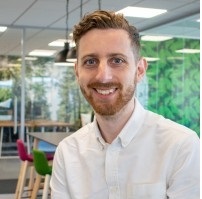
Author: Jamie Doggett
Associate Director of Research, CREATION.co
Social media data has become a crucial part of the research mix. It’s a rich source of insight… when the right data extraction and analytics are applied. Here Jamie from CREATION.co talks about the value of this data in the health/pharma category.
Both healthcare professionals (HCPs) and patients are very active on social media and critical healthcare data can be heard in their public posts.
Patients with chronic conditions often use social media as an outlet to talk about their well-being, medical problems, and their experiences with treatments. HCPs use social media for many reasons including to educate patients and the public, networking, knowledge sharing with peers and to keep up to date with the latest medical and scientific advances.
Listening to HCPs and patients provides deeper understanding and improved stakeholder relationships that ultimately leads to better health.
Social media is unprompted intelligence
The primary contrast between social media market research and most other methods is the insights found are unprompted. What individuals choose to talk about online demonstrates what is important or relevant to them, rather than what the researcher wants to know.
A social researcher is like a person in a large room filled with people having spontaneous conversations. They can listen whilst simultaneously recording where everyone stands, who speaks to who and who’s influencing the opinions of others.
In a healthcare context, that room is filled with millions of practitioners ranging in age, nationality, ethnicity and location… talking about millions of important topics every day in various languages.
For example, when listening to the online conversation of nurses, we heard them asking for help from their peers about administering a product. In response, our client ran local on-the-ground training sessions in the greatest areas of need. This in-person training was then referenced by the same nurses who shared and advocated for the training they had received.
Tracking real world events on social media
In medicine, there are key events that draw the attention of online healthcare professionals, such as a new product gaining regulatory approval. When clinical or real-world study data are published, often coinciding with medical congresses, there is often a spike in online conversation among HCPs as they share their unprompted opinions, sentiment and honest reaction.
A few years ago we analysed the online conversation of health workers who were dispensing a new product following its launch. Very early on we detected their concern about supply keeping up with demand. Months later there was a national shortage, but the manufacturer had been able to make contingency plans. This shows the power of social data for predictive analytics.
Monitor awareness, trial and usage of products
An awareness trial usage (ATU) study is a form of market research which aims to understand how many prescribers are aware of the product being tested, how many have newly tried it, and how many use it. This is often undertaken using traditional methods such as surveys or interviews.
A social media ATU is a method which involves tracking mentions of a pharmaceutical product by prescribing HCPs and non-prescribing support roles. It considers the different ways physicians talk about products - not simply the branded name or the generic name, but abbreviations, acronyms and typos are taken into account.
Using social media for ATU studies can present advantages in speed to insight and timeliness of reporting, all the while removing response biases which arise in primary market ATU study methods.
Social data to monitor drug safety
A less common use of social media market research is monitoring the safety of a drug, known as pharmacovigilance signal detection. This involves tracking social media posts mentioning adverse events, medical treatments and patients.
Predetermined events can be defined, or disease dictionaries and medical vocabularies can be utilised to systematically find any disease or disorder mentioned by the social media user. Use of the latter is an advanced detection technique which can surface unknowns within a drug safety context.
Classifying an identifiable patient or patients requires text-mining, either by finding terms such as personal, object and possessive pronouns or by making use of named-entity recognition.
Rigorous statistical analysis is performed in order to validate this research such as determining the Proportional Reporting Ratio - the proportion of spontaneous reports for a given drug that are linked to a specific adverse outcome, divided by the corresponding proportion for all or several other drugs.
Such analysis can provide insights into the safety profile of medical interventions by determining if side effects are occurring among those taking the drug. Due to the unstructured nature of social media posts in comparison to drug safety data collection forms such as Yellow Card, there is a much larger task at hand to synthesise the data. The two key benefits of adding social media analysis into the drug safety research mix are the volume of safety events that can be detected online and the speed to which a statistically significant trend can be identified.
For example, using this method to track a new drug as it launched, we found a certain safety event being reported online months before the standard reporting methods were able to determine there was a statistical significance.
Navigate the evolving AI landscape
It seems natural the next stage in healthcare social media research will be a dramatic scaling of the use of artificial intelligence (AI) to enhance the research.
AI will analyse vast amounts of social media data in real-time, generate research findings, help identify patterns in HCP and patient needs and behaviours early. The use of various forms of AI are already becoming ubiquitous in research, algorithms will continue to improve automation in the areas of data collection and analysis, significantly reducing the time and resources required for research studies. This will allow researchers to focus more on interpreting findings and developing actionable recommendations.
It is difficult to track down who first said “AI isn't going to replace your job - but someone using AI will”. In the research field it seems clear there are abundant opportunities to take on the unique human tasks and let machines do the mundane, repetitive tasks. If researchers avoid intimidation but rather learn to embrace this new paradigm, we will certainly see better health outcomes from better social media listening.
Be in the room
Considering the benefits of social media market research it is clear why many are adapting their research practices. Why would you only prompt a few people with questions when you can also sit in the room next door to listen and learn from billions of online conversations. Social media data leads to better health.
-----------
Better listening for better health
Launching new healthcare strategies, policies and products is costly. And marketing budgets are shrinking. Don’t waste time or money. Meet your objectives by investing in thoughtful and deep analysis to hear what healthcare professionals say about global medical challenges.
CREATION.co monitors the online conversations of over three million healthcare professionals. Whether you want to hear what neuromuscular specialists in Spain are saying about multiple sclerosis or what national or global policymakers are saying about diabetes or obesity, we can cover it all.
Our data, analysis and insights from over two billion posts of influential, front-line health workers will help you maximise the success of your launch. At CREATION.co we believe that better listening leads to better health. Get in touch to find out why.
Get the latest MRS news
Our newsletters cover the latest MRS events, policy updates and research news.




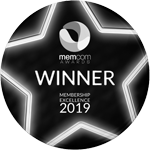

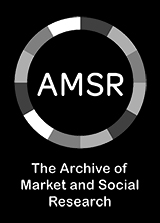
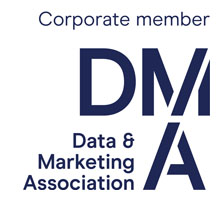

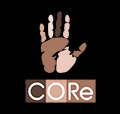

0 comments